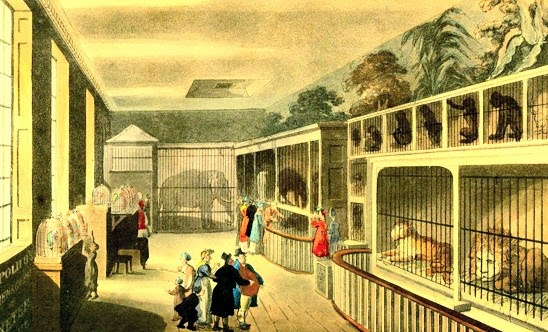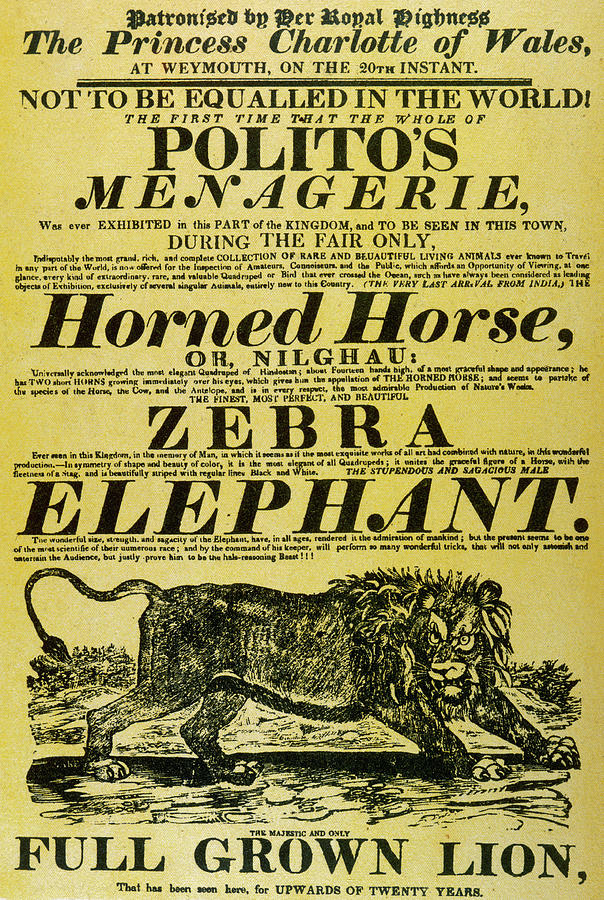The Picture of London, for 1813
Stephen Polito’s menagerie was largely traveling, with the first of his menagerie exhibitions being displayed at the Bartholomew Fair in 1799 with partner Miles.
Between 1810 and 1814, the animals would be housed above the Exeter ‘Change but tour with the animals throughout the summer. This replaced Mr. Pidock’s menagerie that had been at the same location since 1773 and is different from the Royal Menagerie on display at the Tower of London. (Read about that here and here). Entrance was 1 shilling, and very popular with a variety of aristocrats, gentry, and middle class people.

Polito passed away in 1814. His family would use the name to continue the traveling menagerie in the 1820s and 1830s, and many treasures still exist and fetch a high price at auction today.

Read more about the Exeter Exchange and its attractions: Regency Hot Spots: Exeter ‘Change – Regency Reader (regrom.com)










Today this sounds ghastly! Poor animals. And can you imagine the smell…
Agreed. I imagine the smell would have been something else, although most commentary seems to be about the noise. Having that many noisy, unhappy animals in tiny cages was likely deafening. Primary sources cite that you could hear the roars and other noises from the street.